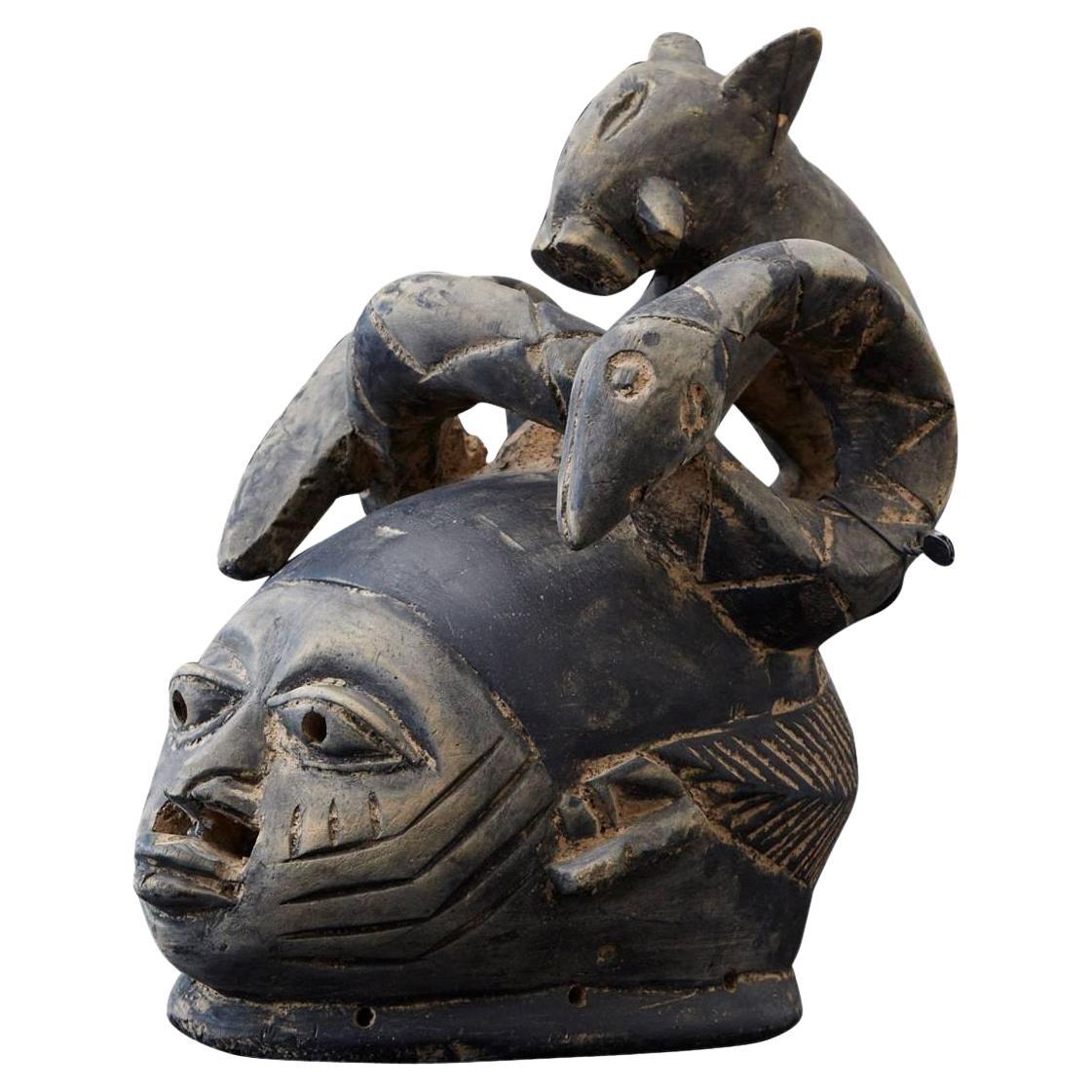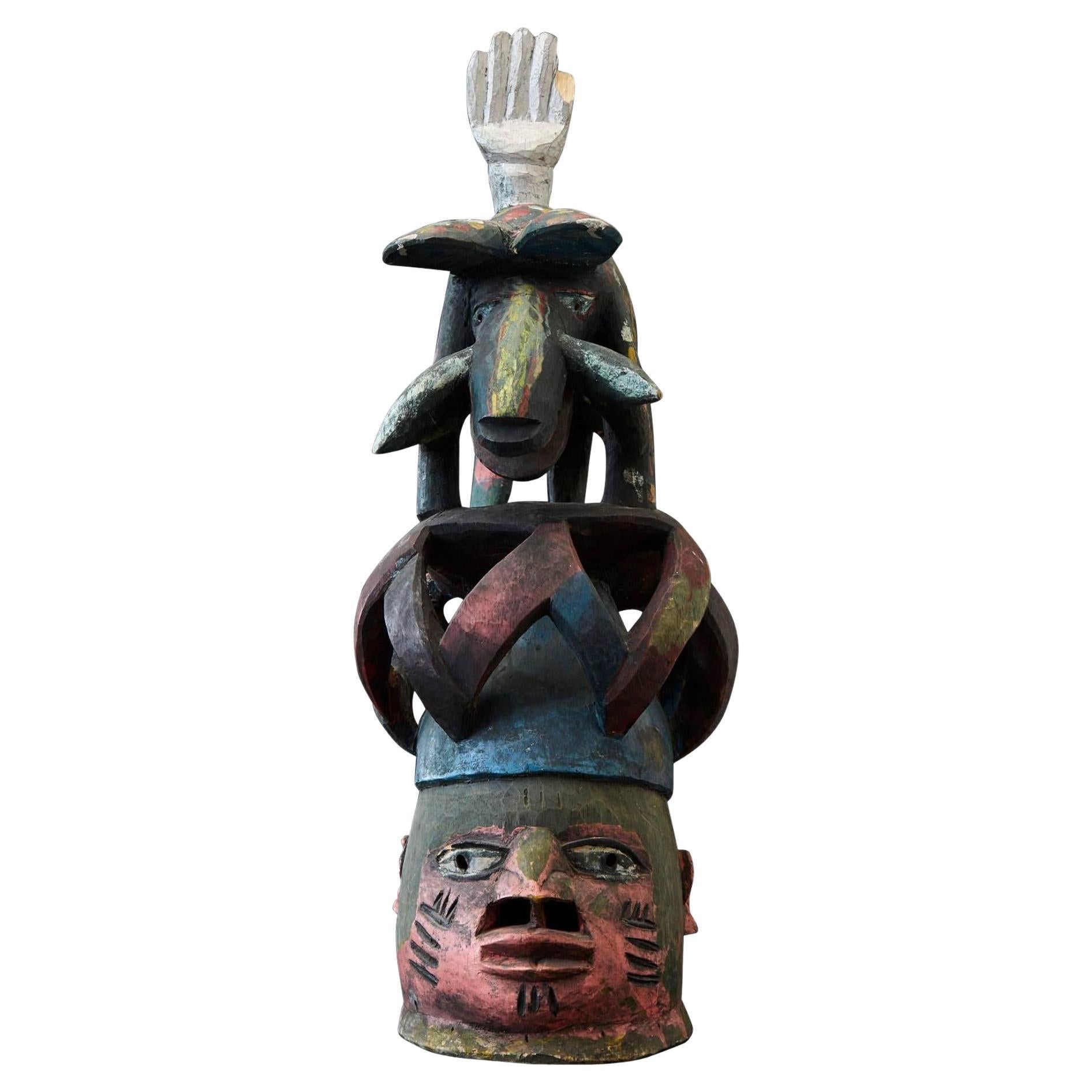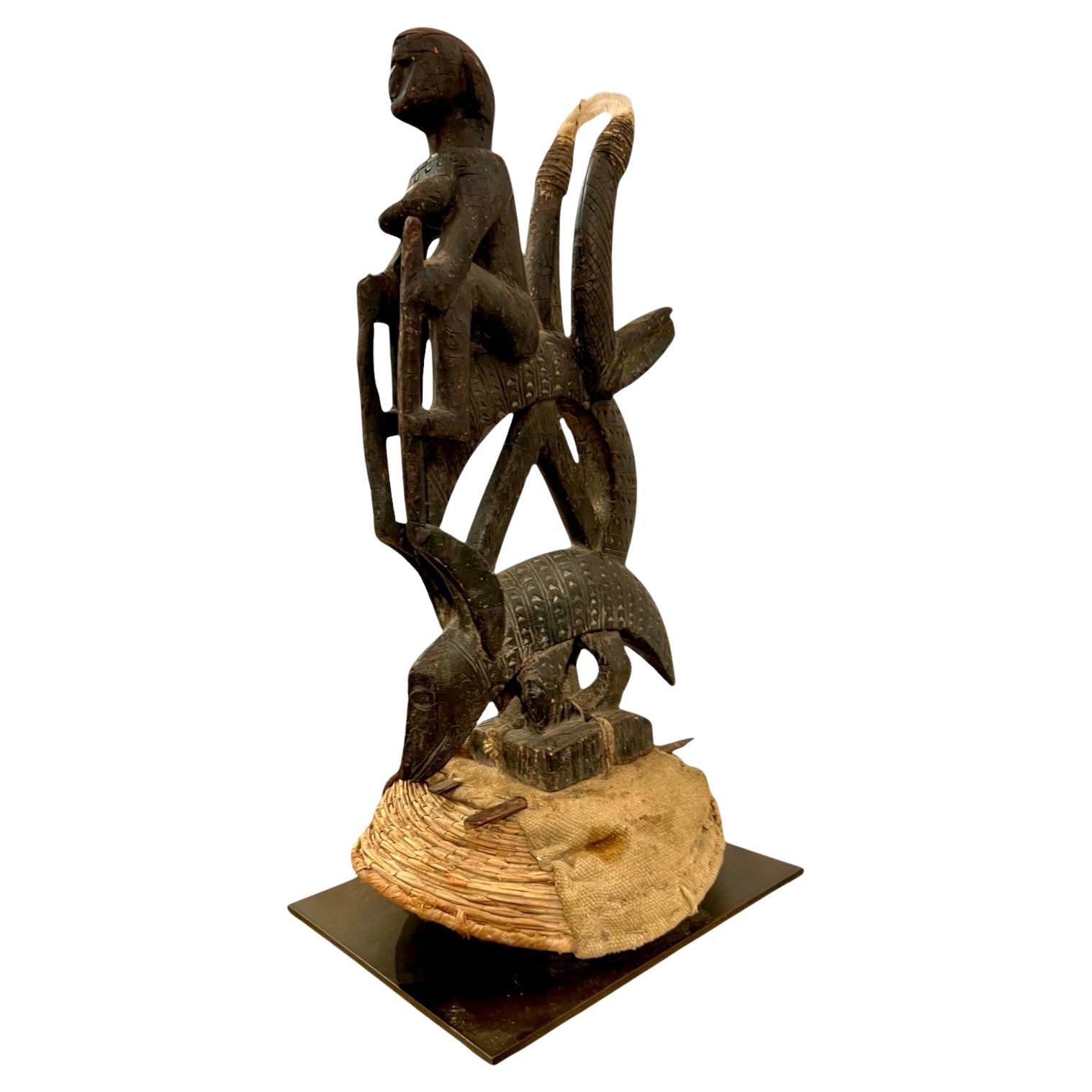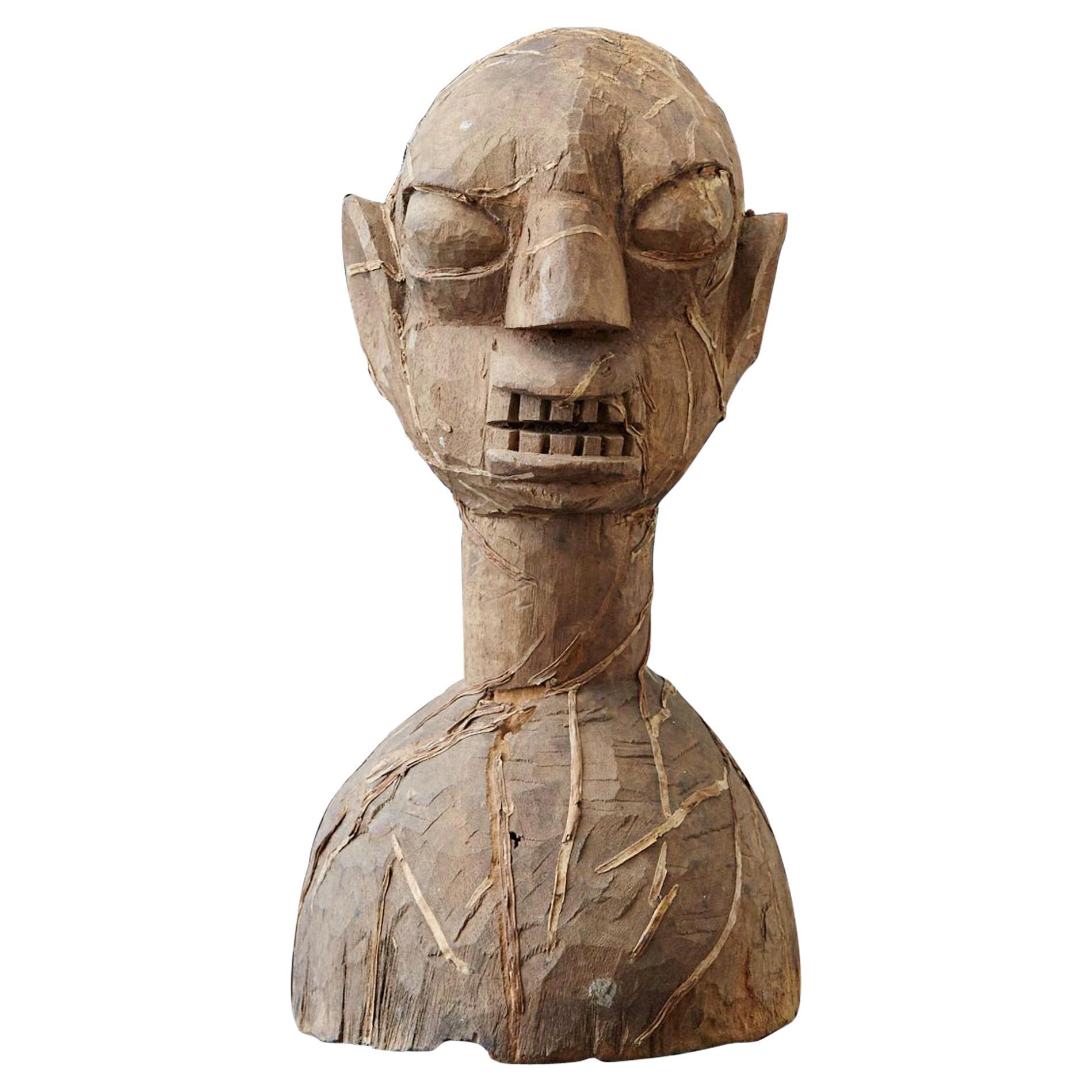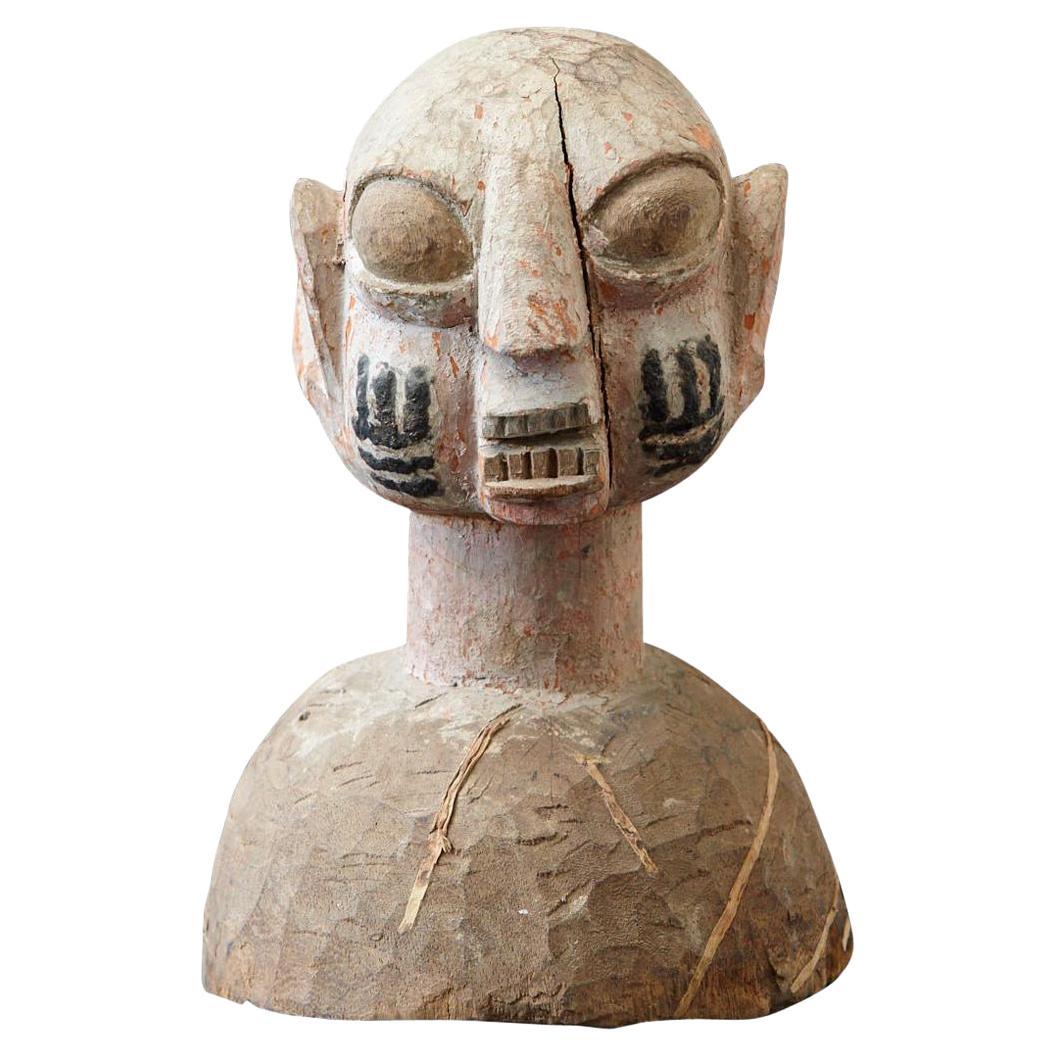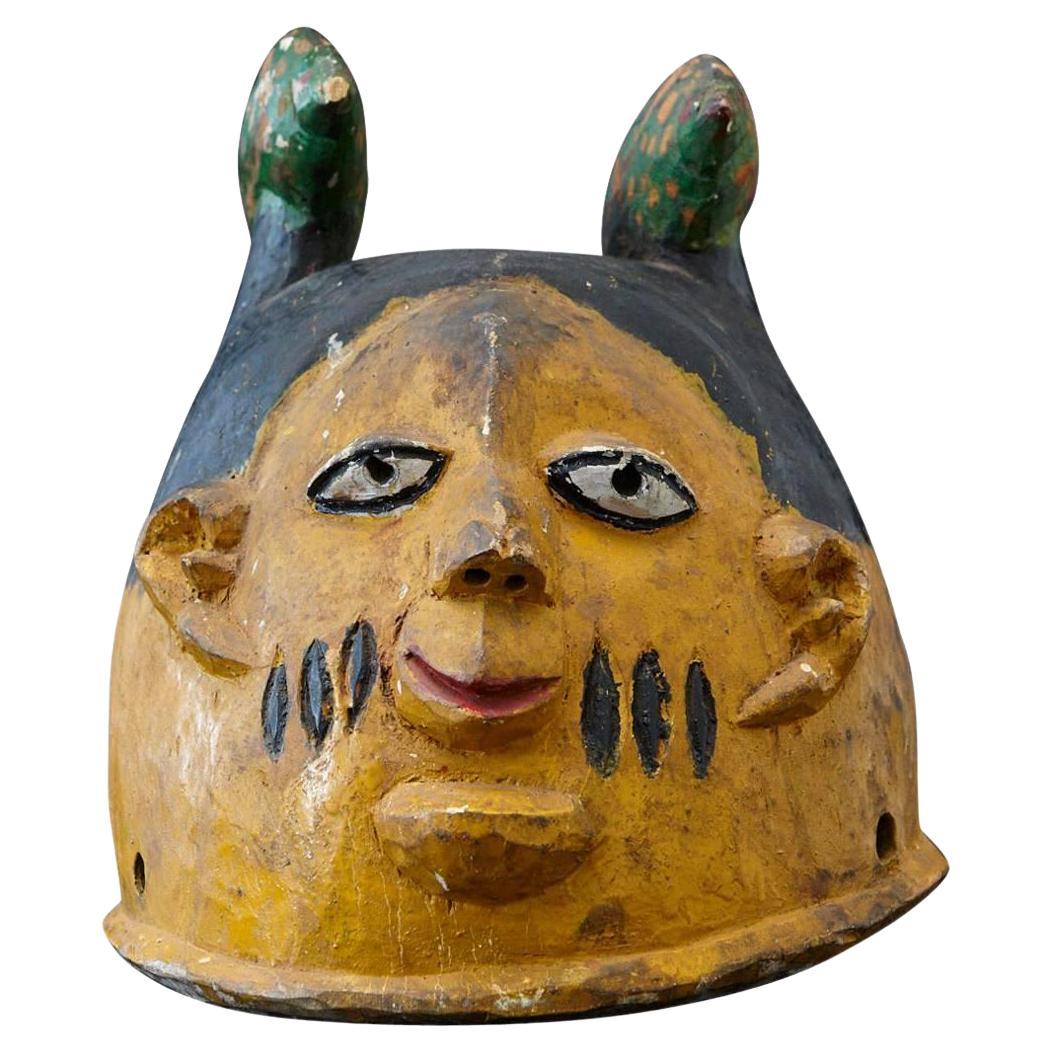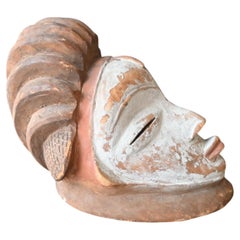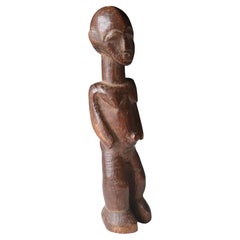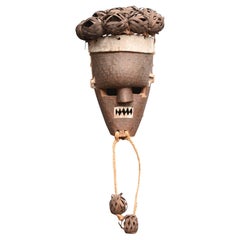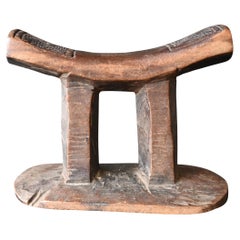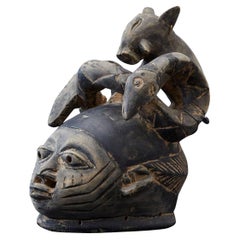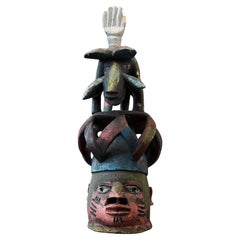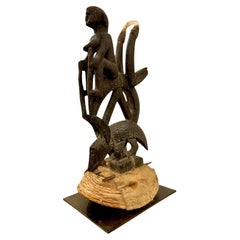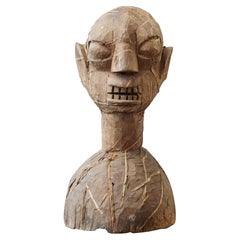Items Similar to Antique carved wooden headdress from the Yoruba tribe, Nigeria, 1900-1920
Video Loading
Want more images or videos?
Request additional images or videos from the seller
1 of 12
Antique carved wooden headdress from the Yoruba tribe, Nigeria, 1900-1920
$540.44
£398.04
€450
CA$735.23
A$817
CHF 428.12
MX$10,019.10
NOK 5,460.41
SEK 5,136.95
DKK 3,425.78
Shipping
Retrieving quote...The 1stDibs Promise:
Authenticity Guarantee,
Money-Back Guarantee,
24-Hour Cancellation
About the Item
A carved wooden headdress from the Yoruba tribe, Nigeria
Strong expression face
Early 20th century
Rich tribal aged patina
Heigth 12 cm, diameter 12 x 13 cm
- Creator:Yoruba Tribe (Sculptor)
- Dimensions:Height: 4.73 in (12 cm)Width: 4.73 in (12 cm)Depth: 6.11 in (15.5 cm)
- Style:Tribal (Of the Period)
- Materials and Techniques:
- Place of Origin:
- Period:
- Date of Manufacture:20th century
- Condition:Wear consistent with age and use. normal age traces.
- Seller Location:Bilzen, BE
- Reference Number:1stDibs: LU10361244886742
About the Seller
New to 1stDibs
Joined in the past six months.
5.0
Gold Seller
Premium sellers maintaining a 4.3+ rating and 24-hour response times
Established in 1987
1stDibs seller since 2025
7 sales on 1stDibs
Typical response time: <1 hour
- ShippingRetrieving quote...Shipping from: Bilzen, Belgium
- Return Policy
Authenticity Guarantee
In the unlikely event there’s an issue with an item’s authenticity, contact us within 1 year for a full refund. DetailsMoney-Back Guarantee
If your item is not as described, is damaged in transit, or does not arrive, contact us within 7 days for a full refund. Details24-Hour Cancellation
You have a 24-hour grace period in which to reconsider your purchase, with no questions asked.Vetted Professional Sellers
Our world-class sellers must adhere to strict standards for service and quality, maintaining the integrity of our listings.Price-Match Guarantee
If you find that a seller listed the same item for a lower price elsewhere, we’ll match it.Trusted Global Delivery
Our best-in-class carrier network provides specialized shipping options worldwide, including custom delivery.More From This Seller
View AllGenuine wooden mask from the Punu tribe, Gabon , first half 20th century
Located in Bilzen, BE
The Punu or Bapunu, are a Bantu meta-ethnicity of Central Africa, mainly in Gabon and a small population in Republic of Congo They are one of the four major people of Gabon, inhabiti...
Category
Early 20th Century Tribal Tribal Art
Materials
Wood
Genuine carved wooden statue from the Lobi tribe, Ghana Burkina Faso, early 1900
By Lobi People
Located in Bilzen, BE
Finely carved large geometric figure from the Lobi tribe, Ghana and Burkina Faso, dating from the early 20th century. I Carved from hard wood with fine small adze marks creating a v...
Category
Antique Early 19th Century Ghanaian Tribal Tribal Art
Materials
Wood
Mukinka Mask from the Salampasu tribe, DR Congo, middle 20th century
Located in Bilzen, BE
A wooden mask from the Salampasu tribe called Mukinka.
The mask is covered with copper pieces from 1 x 2 cm and has a beard in vegetal fiber, the top of the head is also covered with...
Category
Mid-20th Century Congolese Tribal Tribal Art
Materials
Copper
Kuba Wooden Neck Rest (early 20th Century) Dr Congo
By Kuba
Located in Bilzen, BE
Authentic Kuba Wooden Headrest
Democratic Republic of Congo, Early 1900s
Hand-carved hardwood with incised geometric motifs
Dimensions: heigth 14 cm, width 18 cm
Description:
A rare...
Category
Early 20th Century Congolese Tribal Tribal Art
Materials
Wood
Genuine carved wooden statuefrom the Teke tribe, DR Congo, early 1900
Located in Bilzen, BE
A genuine carved wooden statue from the Teke (Bateke) tribe DR Congo
Early 1900
Rich tribal used aged patina
mounted on a wooden base
Total heigth 18.5 cm, heigth figure 16.3 cm, ba...
Category
Early 20th Century Tribal Tribal Art
Materials
Wood
Hedle Pulley from the Baoulé / Baule tribe, Ivory Coast
By Baule Tribe
Located in Bilzen, BE
Baoulé / Baule loom hedle pulley from the beginning of the 20th century
Rich tribal patina and using traces
Beautiful stylization of the face
with custom base as shown in the photo...
Category
Early 20th Century Ivorian Tribal Tribal Art
Materials
Wood
You May Also Like
Gelede Headdress, Yoruba People, Nigeria, circa 1920s
By Yoruba People
Located in Aramits, Nouvelle-Aquitaine
Gelede festivals honor the creative and dangerous power of women elders, female ancestors and goddesses known as "our mothers". The Gelede headdress often consists of two parts, a lo...
Category
Early 20th Century Nigerian Tribal Tribal Art
Materials
Wood
Gelede Headdress, Yoruba People, Nigeria, circa 1950s
By Yoruba People
Located in Aramits, Nouvelle-Aquitaine
Gelede festivals honor the creative and dangerous power of women elders, female ancestors and goddesses known as "our mothers". The Gelede headdress often consists of two parts, a lo...
Category
Mid-20th Century Nigerian Tribal Tribal Art
Materials
Wood
Ciwara Bambara headdress in carved wood and basketry, Mali, Early 20th century
Located in NICE, FR
A very pleasing Ciwara crest, singularly small and accompanied by its original headdress, depicting a stylized antelope leaning on a pangolin. The antelope is ridden by a woman, and white horsehair has been added to the tips of the horns. The piece is carefully sculpted, with notches decorating the bodies of the antelope and the pangolin.
Rattan, plant fiber, cowries, wood Very fine velvety mat patina, Circa 1950
An animal called Ciwara is said to have taught the Bambara how to cultivate the land, and during agrarian ceremonies, they recall the myth through the stylized representation of an antelope whose name ci wara...
Category
Early 20th Century Malian Tribal Tribal Art
Materials
Wood
Wooden Head of an Ooni of Ile-Ife, Yoruba People, Nigeria, circa 1930s
By Yoruba People
Located in Aramits, Nouvelle-Aquitaine
Wooden head of an Ooni of Ile-Ife, Yoruba People, Nigeria, circa 1930s.
The Ooni is the traditional ruler of Ile-Ife. The Nigerian town is seen as the cradle of the Yoruba people.
The number is the inventory number from Lehigh University.
Exhibited: The Lehigh University - Art Galleries permanent collection.
Provenance: The collection of Dr and Mrs John E. Swanson.
Dr John Swanson and his wife Marian lived from 1966 - 1981 in Lagos, Nigeria where Dr Swanson was the Advisor to the National Universities Commission and later on the Chief Planning Officer of the University of Ibadan, Nigeria.
During their time in Africa the Swansons started to collect African art. In 1973 a part of their collection, circa 120 pieces went on loan to The Pennsylvania State University Museum of Art, where the remained until 1978.
In 1981 Dr Swanson passed away and his wife Marian never returned to Africa.
In 1982 Mrs Swanson lent 130 pieces to the Lehigh University Art Gallery where they remained until 1987. A few pieces were also lent to Lafayette College...
Category
Early 20th Century Nigerian Tribal Tribal Art
Materials
Wood
Wooden Head of a Wife of an Ooni of Ile-Ife, Yoruba People, Nigeria, circa 1930s
By Yoruba People
Located in Aramits, Nouvelle-Aquitaine
Wooden head of a wife of an Ooni of Ile-Ife, Yoruba People, Nigeria, circa 1930s.
The Ooni is the traditional ruler of Ile-Ife. The Nigerian town is seen as the cradle of the Yoruba people.
The number is the inventory number from Lehigh University.
Exhibited: The Lehigh University - Art Galleries permanent collection.
Provenance: The collection of Dr and Mrs John E. Swanson.
Dr John Swanson and his wife Marian lived from 1966-1981 in Lagos, Nigeria where Dr Swanson was the Advisor to the National Universities Commission and later on the Chief Planning Officer of the University of Ibadan, Nigeria.
During their time in Africa the Swansons started to collect African art. In 1973 a part of their collection, circa 120 pieces went on loan to The Pennsylvania State University Museum of Art, where the remained until 1978.
In 1981 Dr Swanson passed away and his wife Marian never returned to Africa.
In 1982 Mrs Swanson lent 130 pieces to the Lehigh University Art Gallery where they remained until 1987. A few pieces were also lent to Lafayette College...
Category
Early 20th Century Nigerian Tribal Tribal Art
Materials
Wood
Polychrome Wood Gelede Headdress, Yoruba People, Nigeria, circa 1940s
By Yoruba People
Located in Aramits, Nouvelle-Aquitaine
Gelede festivals honour the creative and dangerous power of women elders, female ancestors and goddesses known as "our mothers". The Gelede headdress often consists of two parts, a lower mask and an upper elaborate superstructure. The lower mask depicts a woman's face, it's composure expressing the qualities of calmness and patience.
The numbers are the inventory numbers from Penn State University and Lehigh University.
Exhibited: The Pennsylvania State University - Museum of Art permanent collection; The Lehigh University - Art Galleries permanent collection.
Provenance: The collection of Dr and Mrs John E. Swanson.
Dr John Swanson and his wife Marian lived from 1966 - 1981 in Lagos, Nigeria where Dr Swanson was the Advisor to the National Universities Commission and later on the Chief Planning Officer of the University of Ibadan, Nigeria.
During their time in Africa the Swansons started to collect African art. In 1973 a part of their collection, circa 120 pieces went on loan to The Pennsylvania State University Museum of Art, where the remained until 1978.
In 1981 Dr Swanson passed away and his wife Marian never returned to Africa.
In 1982 Mrs Swanson lent 130 pieces to the Lehigh University Art Gallery where they remained until 1987. A few pieces were also lent to Lafayette College...
Category
Mid-20th Century Nigerian Tribal Tribal Art
Materials
Wood
